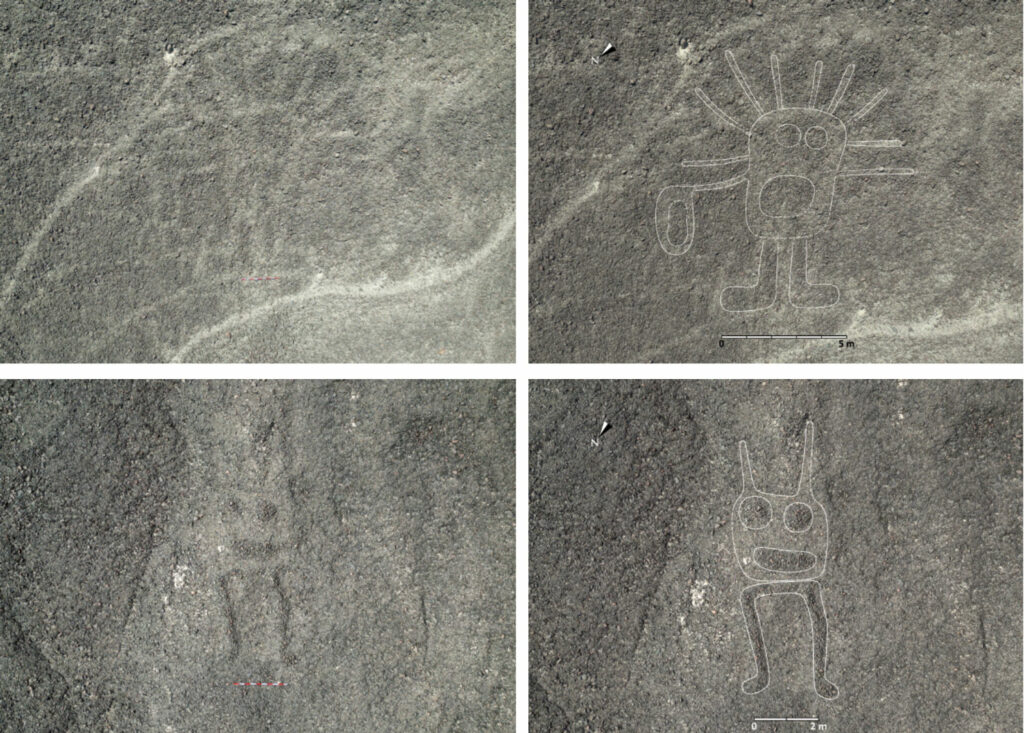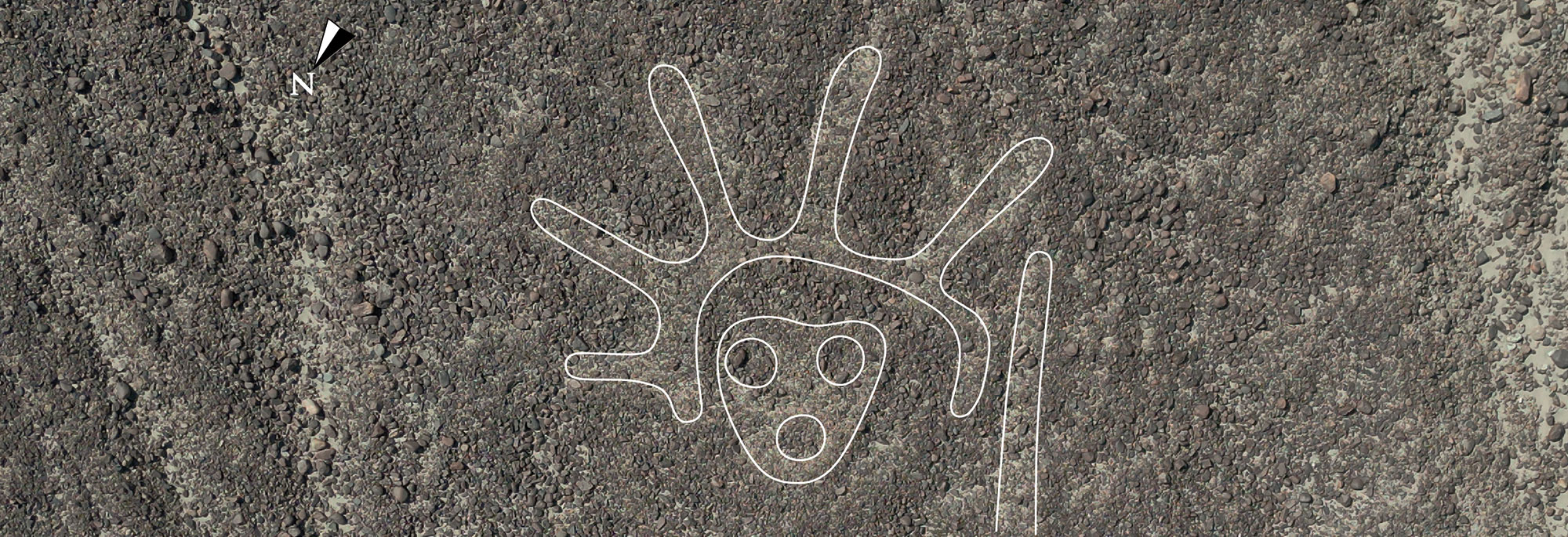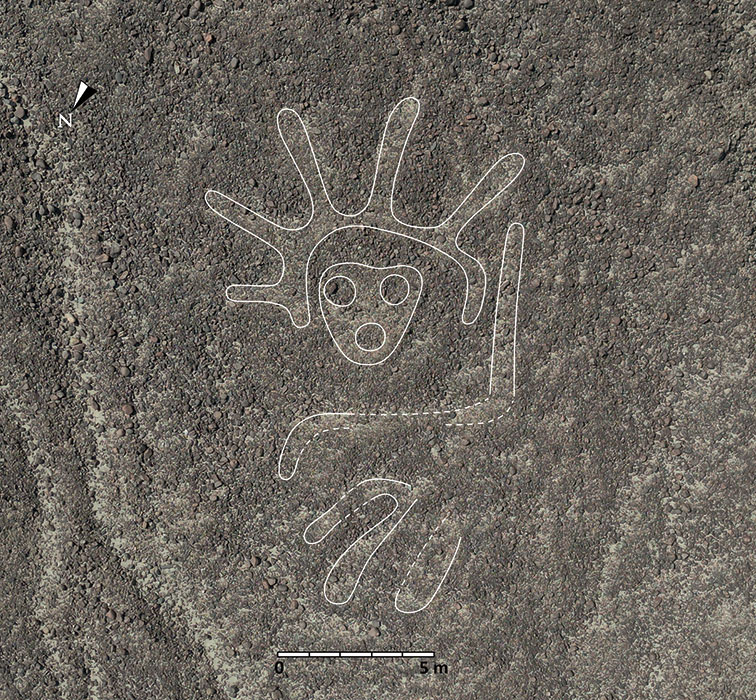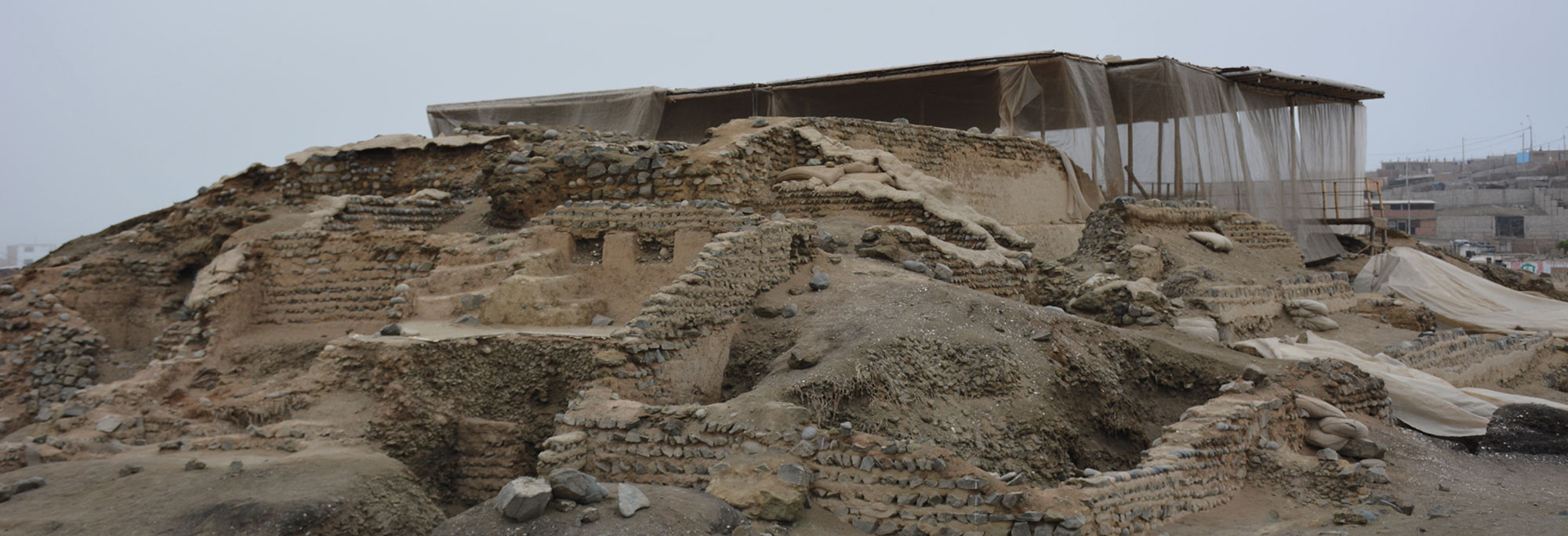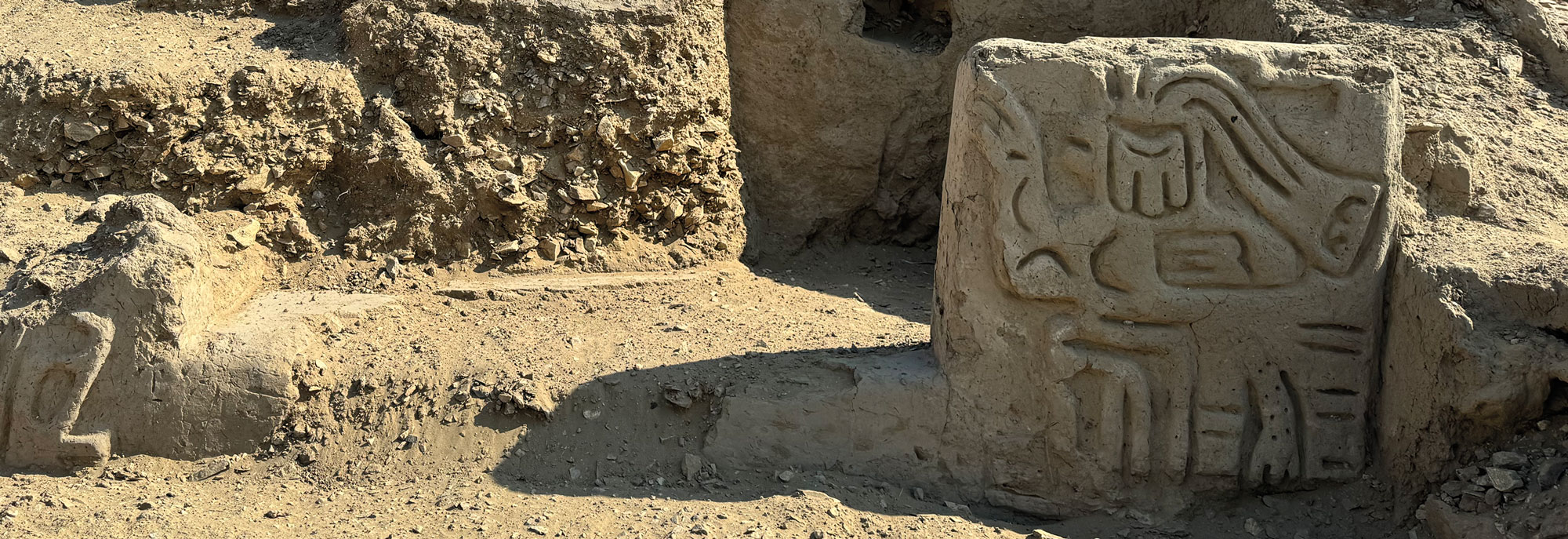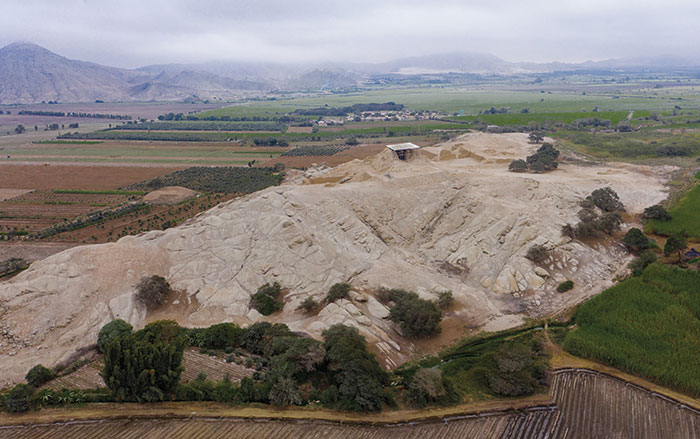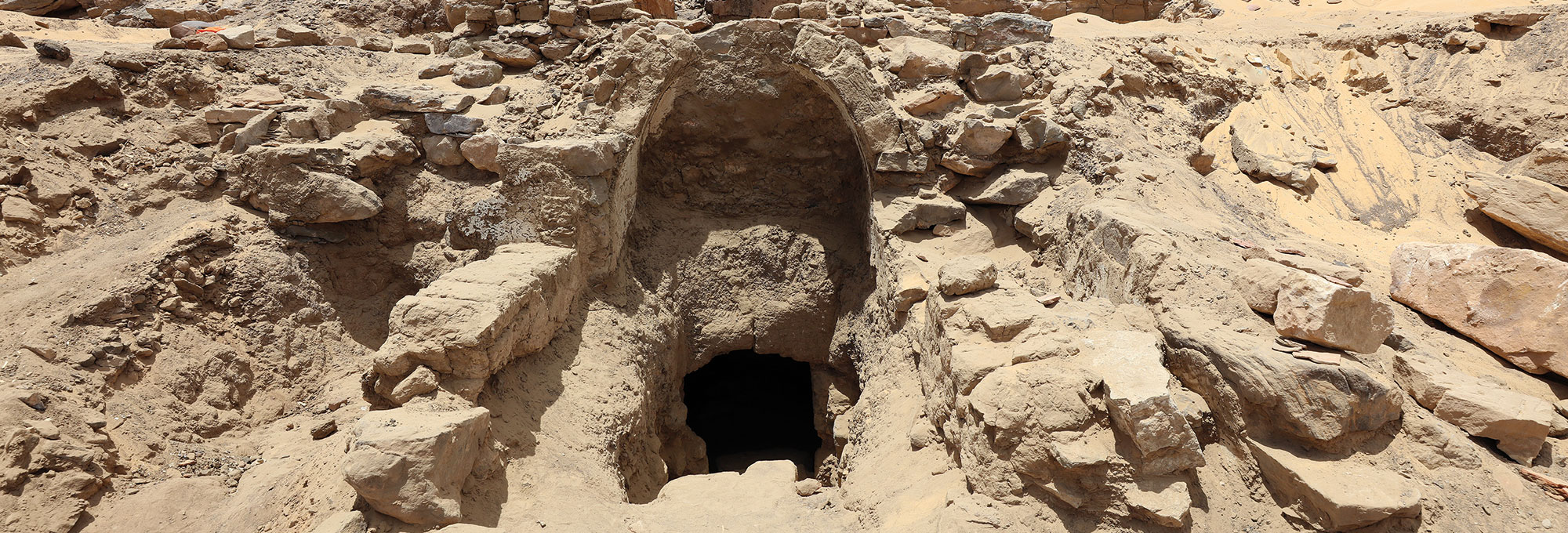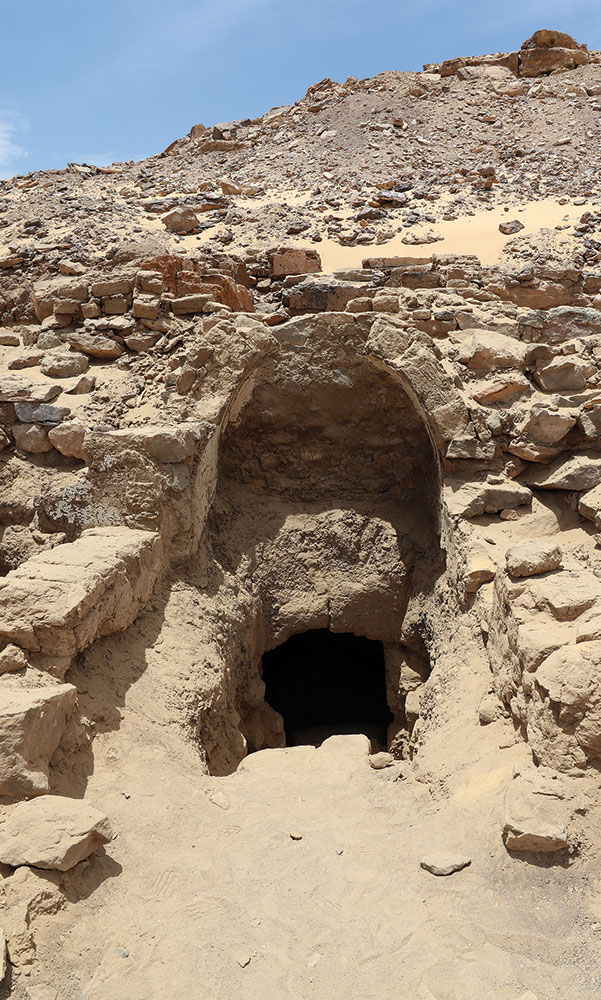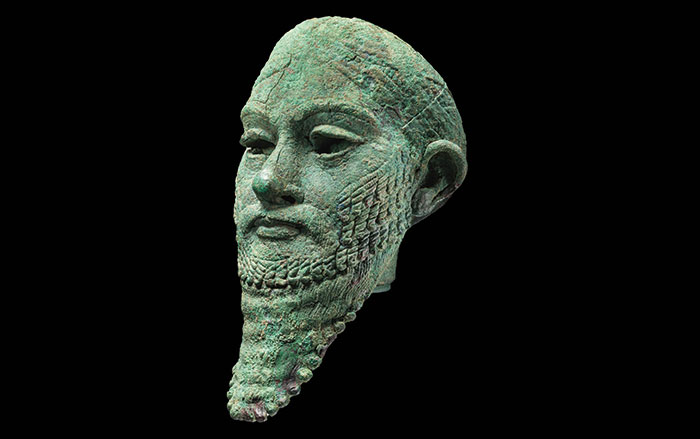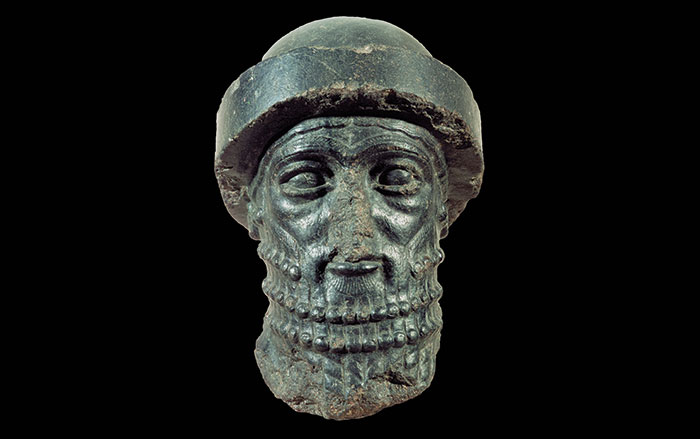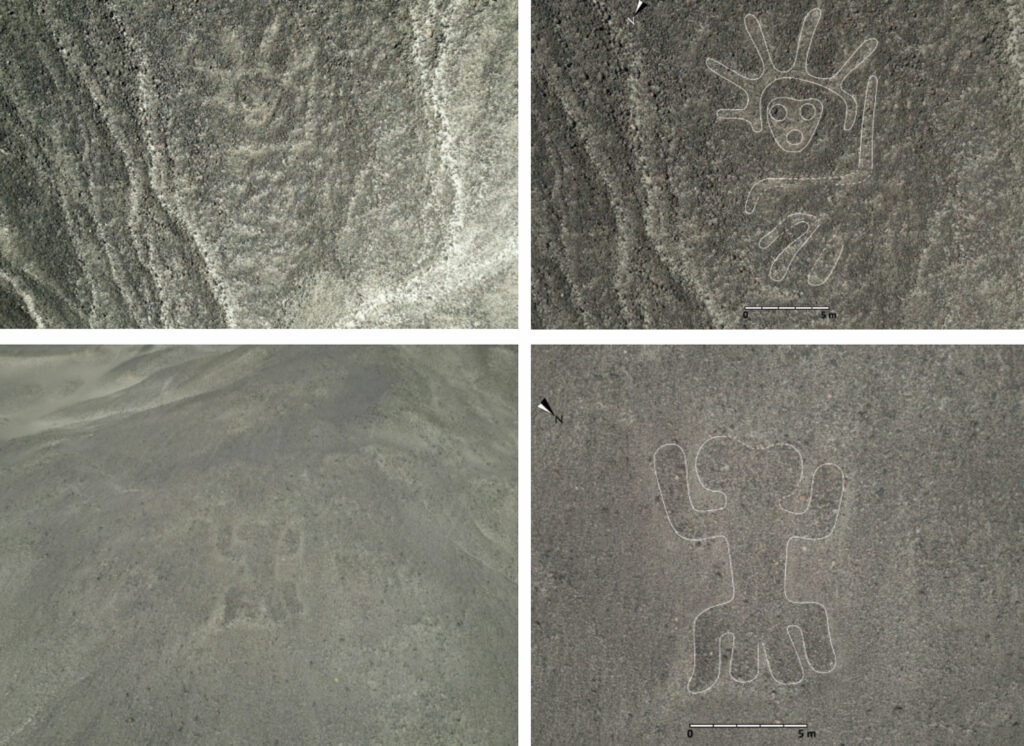
From the 1940s to the early 2000s, geoglyphs were discovered in the Nazca Desert of southern Peru depicting animals, humans, and other figures at the rate of 1.5 per year. By analyzing high-resolution aerial imagery, researchers increased that rate to 18.7 per year between 2004 and 2020, bringing the total number of known figurative geoglyphs to around 430. More recently, a team led by archaeologist Masato Sakai of Yamagata University and computer scientist Marcus Freitag of the IBM Thomas J. Watson Research Center used an artificial intelligence (AI) system trained to recognize faint traces of geoglyphs. This allowed them to identify 303 previously unknown Nazca geoglyphs in a single field season. These geoglyphs are now almost invisible, but when they were created, likely between 100 b.c. and a.d. 50, they could have been seen from informal trails that crisscrossed the desert. The most iconic Nazca figurative geoglyphs, which measure an average of 300 feet across, lie near ancient roads and depict mainly wild animals. By contrast, the newly discovered geoglyphs average only 30 feet in width and around 80 percent of them depict people or domesticated animals. Researchers believe these smaller, less conspicuous designs were the handiwork of small groups, or even individuals, while the larger glyphs were created by entire communities. Enticingly, the AI system has identified hundreds of other potential geoglyphs that have yet to be investigated.
